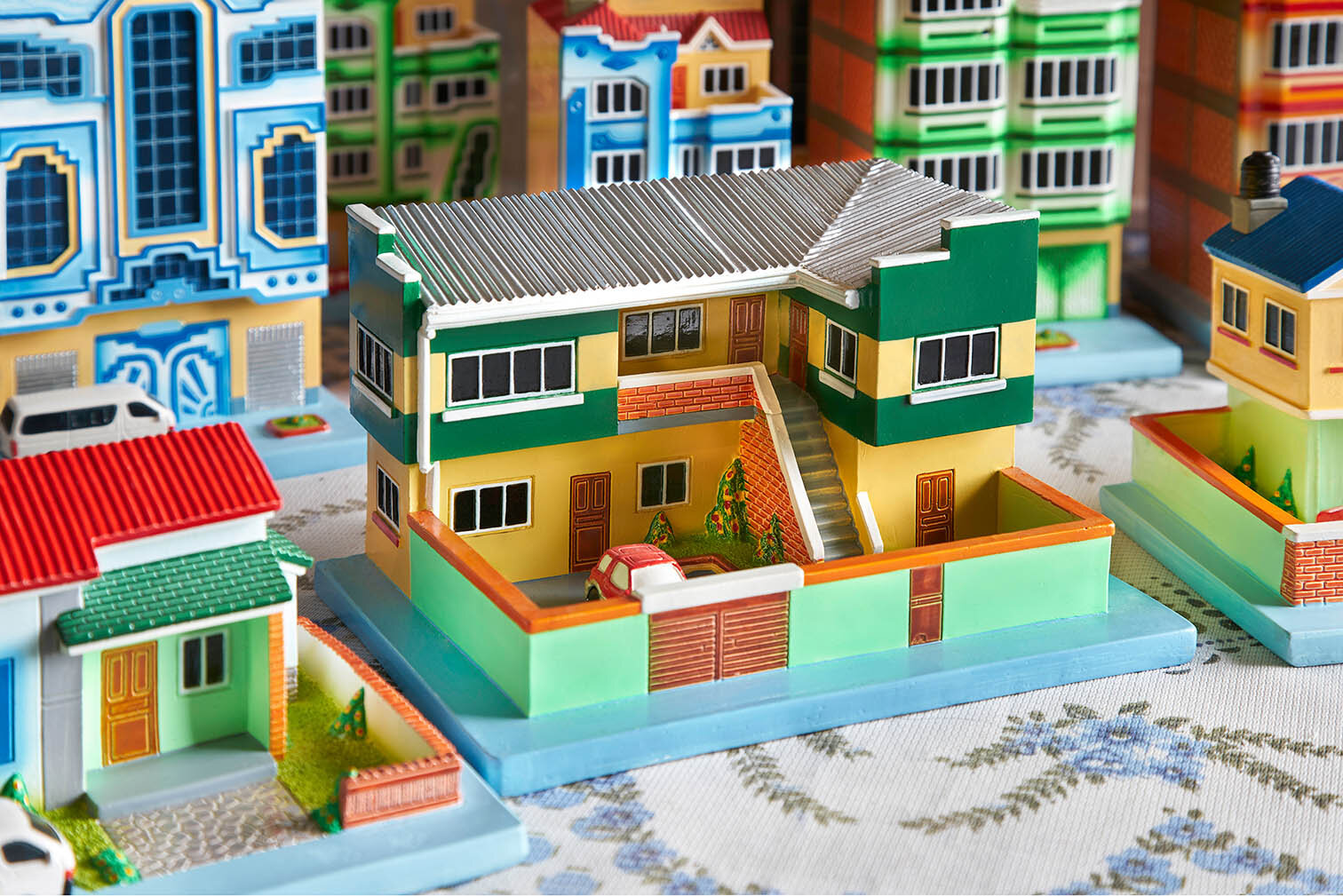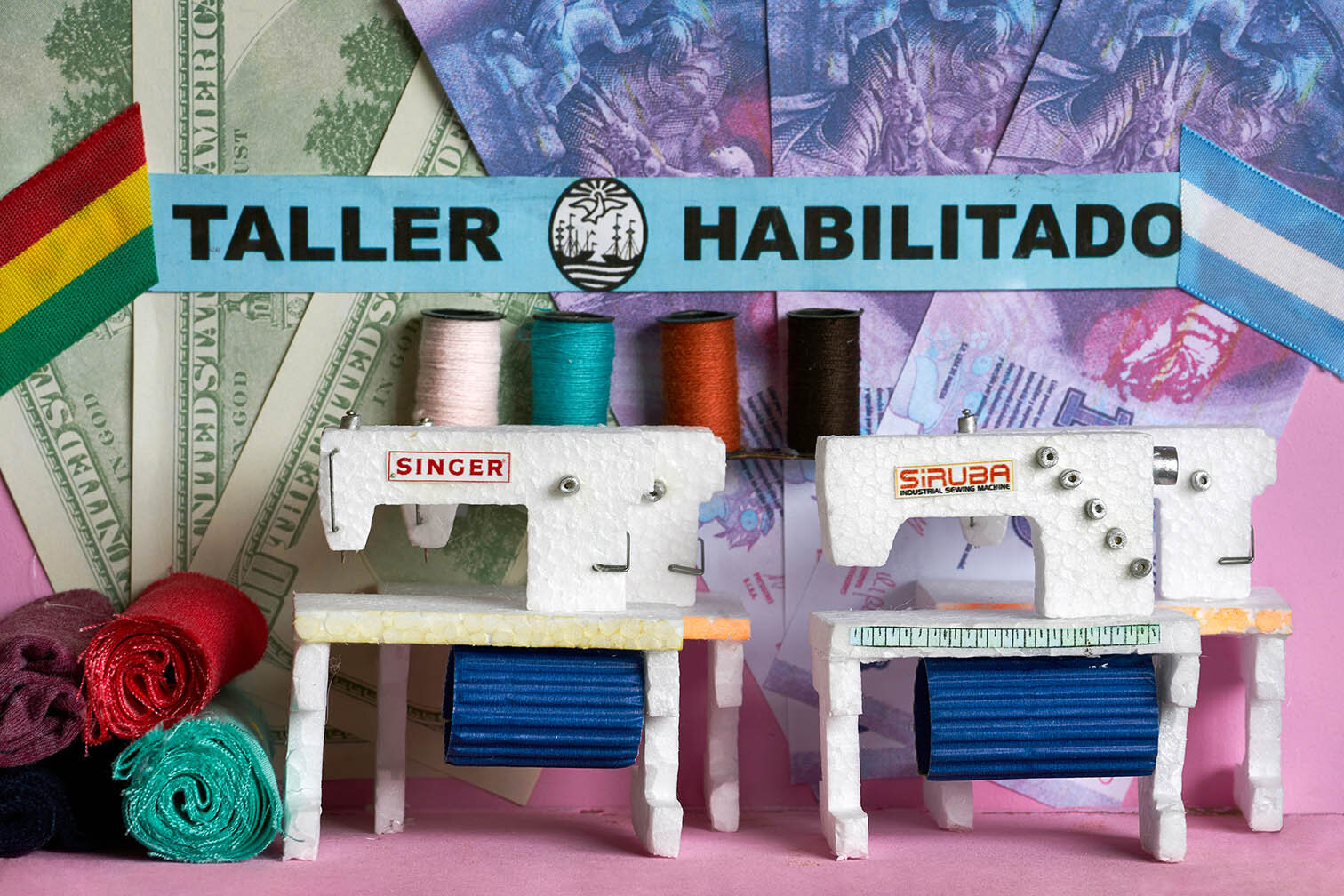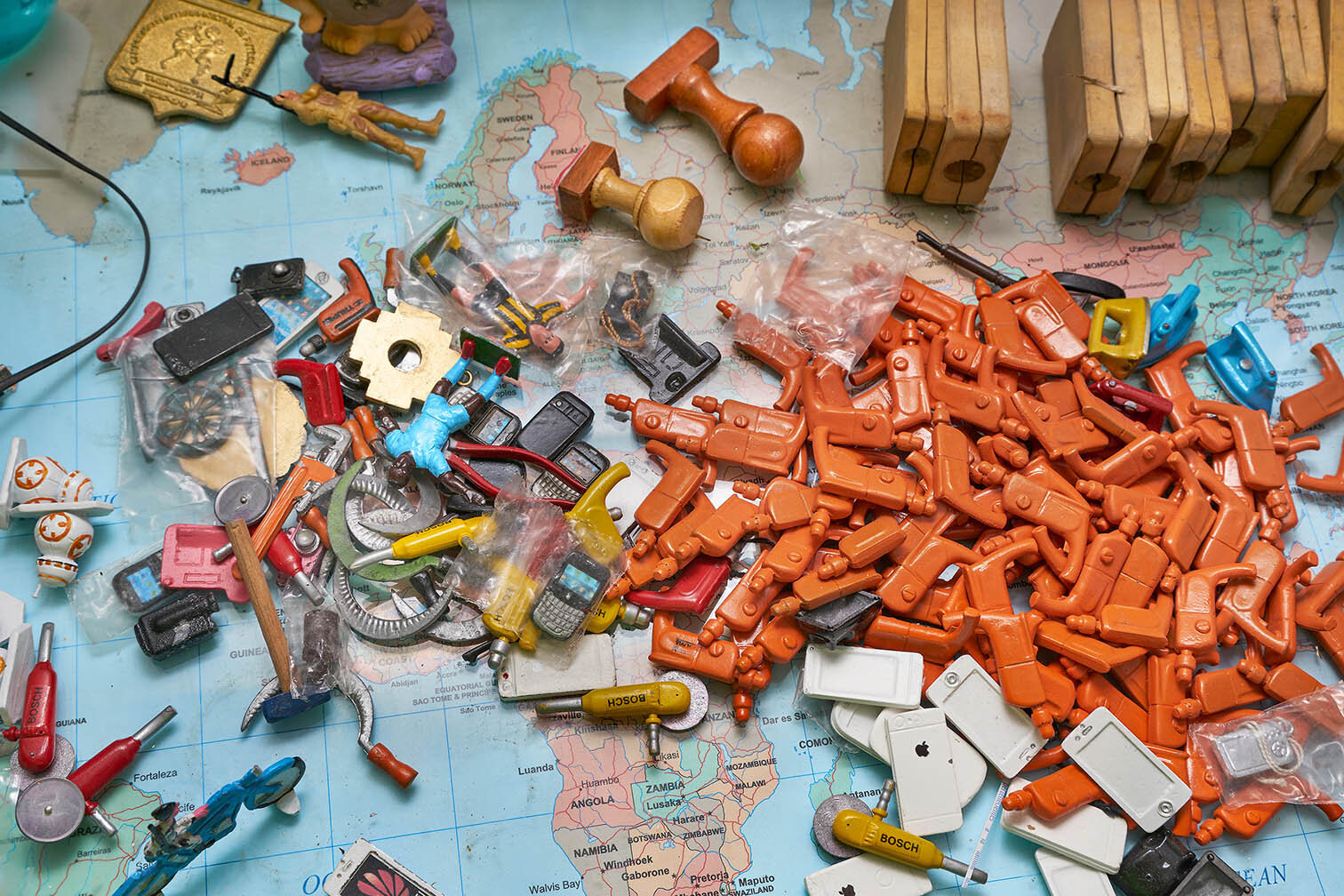Daily little wishes
Photographs by Florencia Blanco
PEQUEÑOS DESEOS COTIDIANOS is a photographic essay by Florencia Blanco, a presentation of the Bolivian Alasitas festival, an entrancing celebration revolving around people’s wishes and wishes, intertwining pre-Hispanic, Catholic and urban rituals. According to Bolivian ancestral tradition, at the vast market fair held during the festival, people buy miniature items, tiny models of their innermost desires for the forthcoming year.
The ritual use of these miniatures goes back to Andean pre-Colombian times, when people buried tiny bone carvings of animals in the fields, in the hope of attracting abundance, to have their herds of livestock become healthier and multiply. The idea behind this was that the miniatures would themselves grow, and is related to the term Alaasitha, which according to the 17th century Jesuit missionary Ludovico Bertonio, meant “allowing one’s hair and nails to grow.” (Vocabulario de la Lengua Aymara, 1612). Here, the miniatures are directly associated with the primal energy of creation, and like seeds they spawn life; through mimesis, a copy draws towards it the features and power of the original until it absorbs it completely.
Today these are no longer representations of animals, as the images inspired by these miniatures have mutated in line with cultural development over time, becoming a fusion of traditional and modern needs. They now embrace all things natural and industrial, rural and urban: houses with water tanks, businesses of all kinds, from butcher’s shops to hairdressers, cafes and restaurants, cellular phones, computers, university diplomas, passports, plane tickets, and bricks.
Although the Alasitas fair is part of daily life in Bolivia, its celebration, personified in Ekeko, the ancient Aymara god of abundance and prosperity, takes place on January 24, when the city of La Paz hosts a huge sprawling market fair where miniatures of all sorts are sold. Thousands of people visit the city to purchase their miniatures before going to the churches to have them blessed. Then on the church steps themselves, the miniatures are submitted to the “ch’allar” ritual, where liquor is spilled on the ground and thanks given to the Pachamama, while around them echo the cries of the street sellers advertising their best deals: “One million dollars for ten Bolivian pesos!”
The vibrant intensity of Alasitas comes alive in the photographs taken by Florencia Blanco, a celebration which is as magical as it is concrete, a lively blend of confirmation and contradiction between ancient tradition and modern trends.
The ritual tours taking place in the city of La Paz during the Alasitas fair have been included by UNESCO on its list of representations of Intangible Cultural Heritage of Humanity, elements that "help demonstrate the diversity of cultural heritage and raise awareness about its importance."





